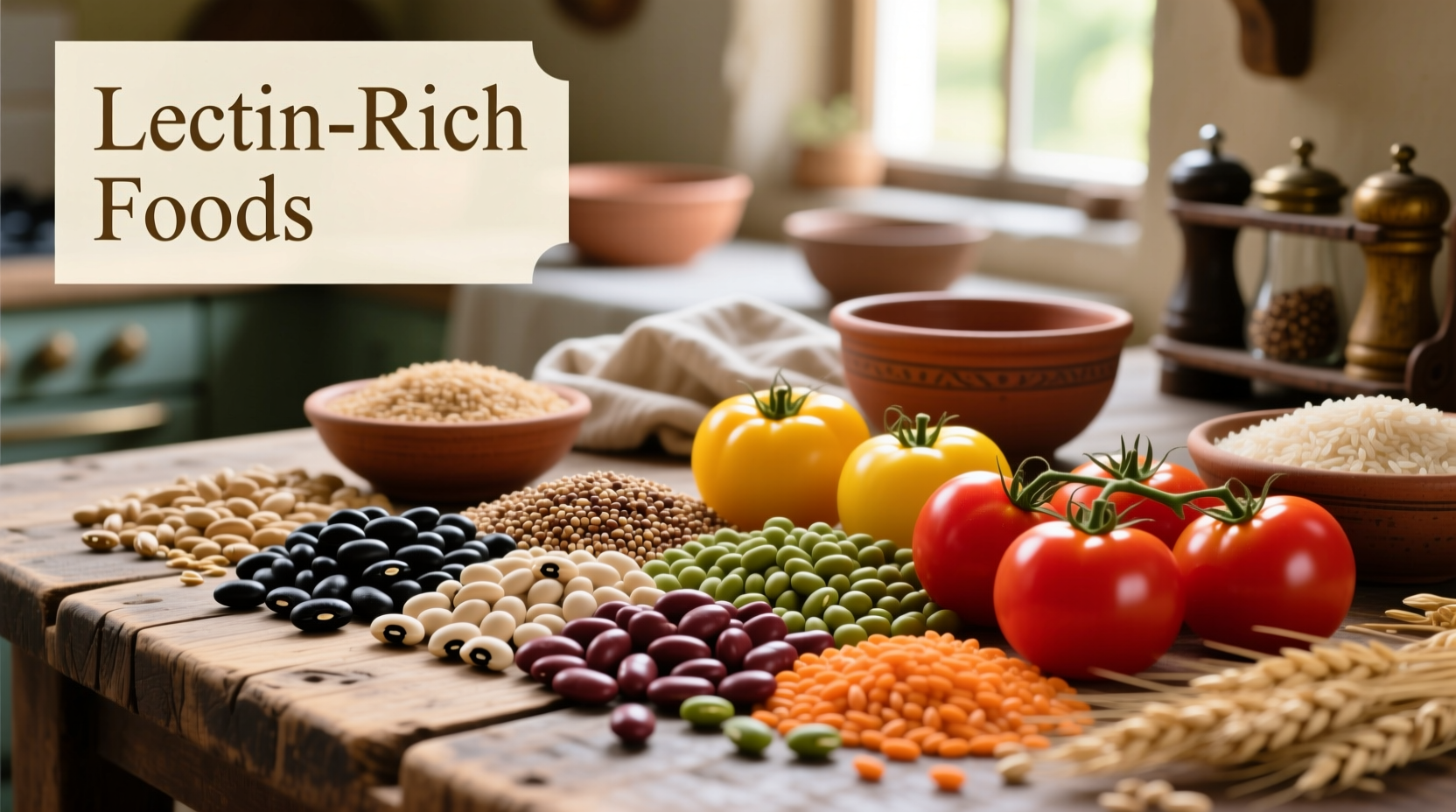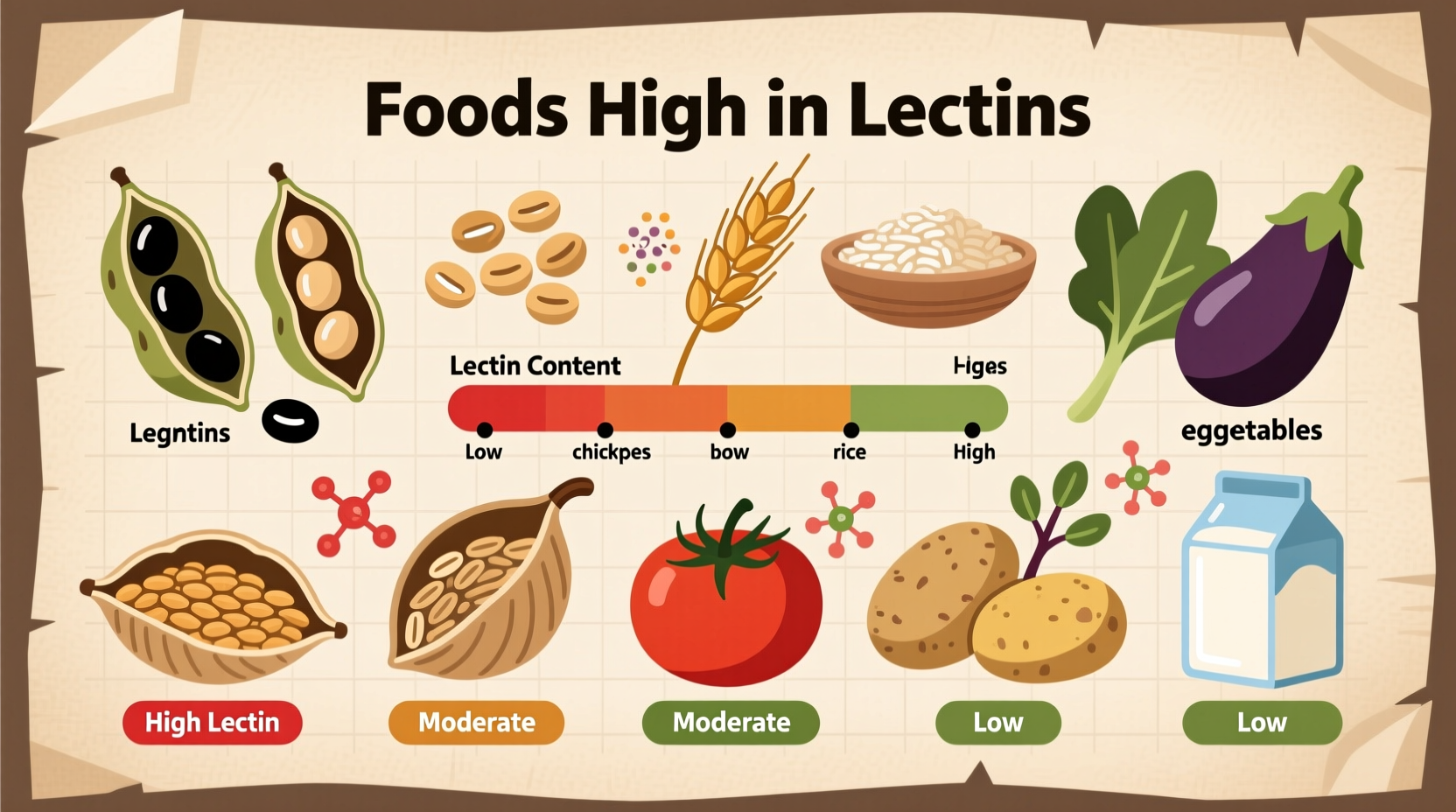If you're searching for what foods contain lectins, you'll find them primarily in legumes, grains, nightshades, and certain fruits. This comprehensive guide details exactly which foods have the highest lectin content, how preparation methods affect lectin levels, and the current scientific understanding of lectins in human nutrition - all based on peer-reviewed research from authoritative health institutions.
Lectins are naturally occurring proteins found in many plant-based foods that serve as a defense mechanism for the plants. While some people express concerns about lectins due to their potential effects on digestion and nutrient absorption, it's important to understand that most lectins are significantly reduced or eliminated through proper food preparation. The scientific consensus indicates that for the vast majority of people, lectin-containing foods prepared correctly are not only safe but provide valuable nutrients and health benefits.
Understanding Lectins in Your Diet
Before diving into specific foods, it's crucial to understand that not all lectins are created equal, and their impact varies significantly based on food source and preparation. According to research from the National Institutes of Health, the lectins that have raised health concerns primarily come from specific raw or undercooked foods, particularly certain legumes.
The lectin content in foods can be dramatically reduced through common cooking methods. For example, boiling kidney beans for just 10 minutes reduces lectin content by over 99.9%, according to a FDA report on food safety. This explains why properly prepared legumes have been safely consumed as dietary staples across cultures for thousands of years.
Foods Highest in Lectins
These foods contain the most significant lectin levels when consumed raw or improperly prepared:
Legumes: The Primary Source
Legumes represent the most concentrated dietary source of lectins, particularly raw or undercooked varieties. Proper preparation is essential for safe consumption.
| Food | Lectin Content (Raw) | Effective Reduction Method | Safe Consumption Tip |
|---|---|---|---|
| Red kidney beans | Extremely high | Boiling 10+ minutes | Never use slow cooker alone for raw beans |
| Soybeans | Very high | Fermentation or thorough cooking | Choose fermented soy products when possible |
| Peanuts | Moderate to high | Dry roasting | Roasted peanuts have significantly reduced lectins |
| Chickpeas | Moderate | Boiling or pressure cooking | Soak overnight before cooking |
According to research published in the American Journal of Clinical Nutrition, proper cooking reduces lectin activity in legumes to negligible levels. This explains why populations with high legume consumption, such as those following Mediterranean diets, show excellent health outcomes.
Grains and Lectins
Whole grains contain lectins primarily in their outer layers. Modern processing methods significantly reduce these compounds:
- Wheat - Contains wheat germ agglutinin (WGA), concentrated in the bran and germ. Milling and cooking substantially reduce lectin content.
- Rice - Brown rice contains more lectins than white rice due to the retained bran layer. Proper cooking eliminates most lectins.
- Quinoa - Contains saponins (not technically lectins but similar compounds) that are water-soluble and removed by rinsing.
The USDA Food Safety and Inspection Service confirms that standard cooking procedures for grains effectively neutralize lectins, making properly prepared grain products safe for consumption.

Nightshade Vegetables and Lectins
Nightshade family vegetables contain lectins, though generally at lower levels than legumes:
- Tomatoes - Contain tomato lectin, primarily in the seeds and gel. Cooking reduces lectin content.
- Eggplant - Highest lectin content in the skin. Peeling and cooking reduces levels.
- Peppers - Both sweet and hot varieties contain lectins, with higher concentrations in raw forms.
- Potatoes - Lectins concentrated in the peel. Proper cooking significantly reduces levels.
Foods with Lower Lectin Content
For those concerned about lectin intake, these foods naturally contain minimal lectins:
- Most leafy greens (kale, spinach, lettuce)
- Cruciferous vegetables (broccoli, cauliflower, cabbage)
- Root vegetables (carrots, beets, sweet potatoes)
- Fruits (berries, citrus, apples, pears)
- Animal proteins (meat, fish, eggs)
- Fats (avocado, olive oil, coconut oil)
Scientific Context: Lectins and Human Health
Understanding the actual health implications of dietary lectins requires examining the complete scientific picture. Research from Harvard T.H. Chan School of Public Health indicates that lectins in properly prepared foods pose minimal risk for most people and that the health benefits of consuming these foods far outweigh theoretical concerns.
It's worth noting that the timeline of lectin research reveals evolving understanding:
- 1970s-1980s: Initial research identified lectins as potentially problematic compounds
- 1990s-2000s: Studies demonstrated effective reduction through cooking
- 2010s-present: Research focuses on potential health benefits of lectin-containing foods despite lectin content
The current scientific consensus, as reflected in position papers from major nutrition organizations, recognizes that concerns about dietary lectins are generally overstated for properly prepared foods. A comprehensive review in the journal Nutrients concluded that 'the lectin content of commonly consumed foods, when properly prepared, does not pose significant health risks for the general population.'
Practical Guidance for Managing Lectin Intake
For most people, lectins in food aren't a concern when following standard food preparation practices. However, if you have specific digestive sensitivities, consider these evidence-based approaches:
- Proper cooking - Boiling is most effective for legumes (minimum 10 minutes at rolling boil)
- Soaking - Soak beans 12-24 hours before cooking, changing water several times
- Fermentation - Traditional fermentation methods significantly reduce lectins
- Peeling and deseeding - For nightshades like tomatoes and eggplants
- Diversifying your diet - Rather than eliminating entire food groups
It's important to recognize the context boundaries for lectin concerns. According to the Academy of Nutrition and Dietetics, dietary lectins are primarily a consideration for individuals with specific digestive conditions or those consuming large quantities of raw or improperly prepared high-lectin foods. For the general population, lectin-containing foods form the foundation of many of the world's healthiest dietary patterns.
Balanced Perspective on Lectin-Containing Foods
When evaluating foods containing lectins, consider the complete nutritional picture. Legumes, grains, and nightshades provide essential nutrients, fiber, and phytochemicals that contribute to long-term health. Population studies consistently show that diets rich in these foods correlate with reduced risk of chronic diseases.
Rather than focusing on eliminating specific compounds like lectins, nutrition experts recommend following evidence-based dietary patterns that include a variety of plant-based foods prepared using traditional methods. The key to safe consumption isn't elimination but proper preparation - a practice humans have refined over thousands of years of culinary evolution.











 浙公网安备
33010002000092号
浙公网安备
33010002000092号 浙B2-20120091-4
浙B2-20120091-4